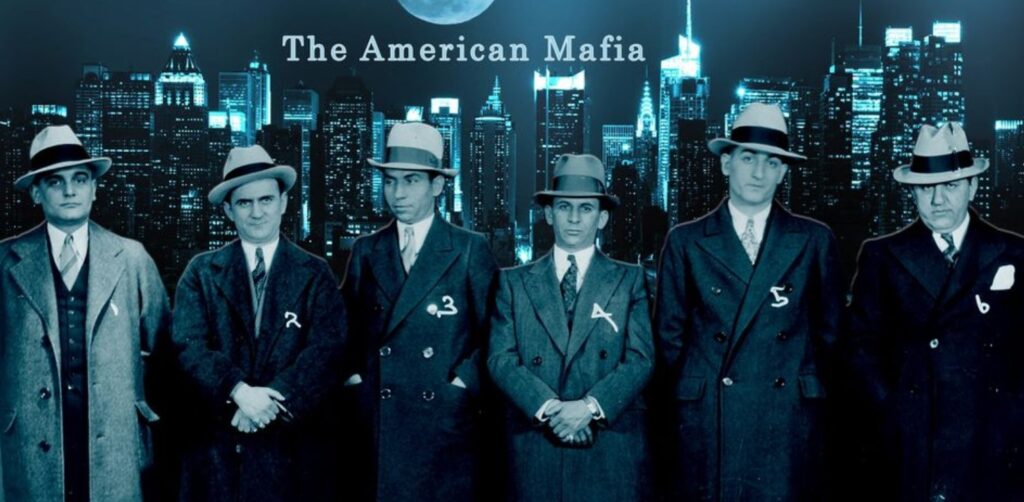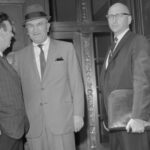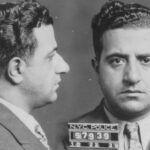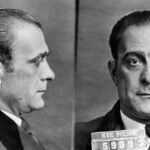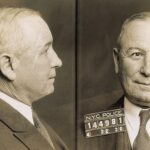In 1929, a clandestine meeting took place in Atlantic City, New Jersey, that would forever change the landscape of organized crime in America. Key underworld figures like Lucky Luciano, Meyer Lansky, and Al Capone gathered to lay the foundation for what would become known as the National Crime Syndicate. This confederation of criminal organizations was unique in its multi-ethnic composition, primarily involving the Italian-American Mafia and the Jewish mob. The Syndicate’s formation marked a significant departure from the ethnically homogenous gangs that had previously dominated the criminal underworld.
The Syndicate was not just another criminal organization; it was a revolutionary concept that broke ethnic barriers in organized crime. Meyer Lansky, a Jewish mobster, and Salvatore “Lucky” Luciano, an Italian-American, were among the key architects who envisioned a united front of criminal enterprises. Their idea was to bring together rival gangs and focus on mutual interests rather than ethnic divisions. This approach allowed the Syndicate to marshal resources more effectively and operate on a national scale, making it a formidable force in the criminal world.
The Business of Crime – Diverse Ventures
The National Crime Syndicate was involved in a plethora of criminal activities, ranging from racketeering and extortion to drug trafficking and illegal gambling. The organization’s reach extended across the United States, with a strong presence in states like New York, New Jersey, and Illinois. The Syndicate’s operations were so extensive that they were often described as a “government within a government,” wielding considerable influence and power.
Murder, Inc. – The Syndicate’s Dark Enforcers
One of the most notorious aspects of the National Crime Syndicate was its enforcement arm, known as Murder, Inc. This Brooklyn-based gang was responsible for carrying out hundreds of murders on behalf of the Syndicate during the 1930s and 1940s. Led by figures like Louis “Lepke” Buchalter and Albert “the Mad Hatter” Anastasia, Murder, Inc. was a ruthless operation that eliminated anyone who posed a threat to the Syndicate’s interests.
The Prohibition Era – A Catalyst for Growth
The 18th Amendment, which led to the Prohibition of alcohol, provided an unprecedented opportunity for the Syndicate to expand its operations. The organization capitalized on the public’s disdain for Prohibition by supplying illegal alcohol, thereby gaining widespread support. The end of Prohibition in 1933 with the 21st Amendment could have been a setback, but the Syndicate had already diversified its criminal enterprises by then, ensuring its continued dominance.
The Syndicate’s Las Vegas Connection
The Syndicate also played a pivotal role in the development of Las Vegas as a gambling haven. After the murder of Bugsy Siegel in 1947, the organization invested heavily in the construction of hotel-casinos along the Las Vegas Strip. Meyer Lansky, who had taken over the reins after Lucky Luciano’s deportation, was instrumental in this expansion. The Syndicate’s involvement in Las Vegas was so extensive that it was often credited with laying the foundation for the city’s rise as a global entertainment capital.
The Government’s Ambivalent Relationship
Interestingly, the American government had a complex relationship with the Syndicate. During World War II, the Office of Strategic Services (the precursor to the CIA) collaborated with the organization for specific covert operations, including the invasion of Sicily. This relationship extended into the Cold War era, where key Syndicate figures were used as informants.
The Syndicate’s Lasting Impact
By the late 1940s, many components of the National Crime Syndicate had started to disintegrate, especially its non-Italian factions. However, individuals like Meyer Lansky continued to operate, aligning themselves with Italian groups. The Syndicate’s influence was so pervasive that it left an indelible mark on American society, from the rise of Las Vegas to the very structure of organized crime.
The National Crime Syndicate was more than just a criminal organization; it was an institution that redefined the rules of organized crime. Its multi-ethnic composition, diverse criminal enterprises, and far-reaching influence make it a subject of enduring fascination and study. Even today, the echoes of the Syndicate’s operations can be felt, reminding us of a time when crime was not just a local affair but a highly organized, national endeavor.

